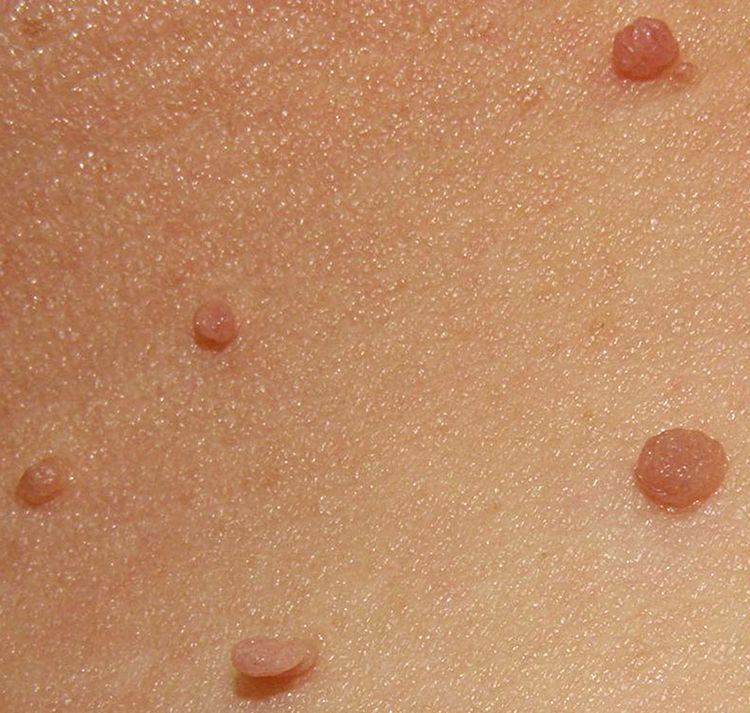Specialty Dermatology OMIM 109400 MedlinePlus 000848 | ICD-9-CM 701.9 DiseasesDB 33273 | |
 | ||
ICD-10 L91.8
(congenital Q82.8) | ||
An acrochordon (plural acrochorda; also known as a skin tag or fibroepithelial polyp) is a small benign tumor that forms primarily in areas where the skin forms creases, such as the neck, armpit, and groin. They may also occur on the face, usually on the eyelids. Acrochorda are harmless, are typically painless and usually do not grow or change over time. Though tags up to a half-inch long have been seen, they are typically the size of a grain of rice. The surface of an acrochordon may be smooth or irregular in appearance and is often raised from the surface of the skin on a fleshy stalk called a peduncle. Microscopically, an acrochordon consists of a fibro-vascular core, sometimes also with fat cells, covered by an unremarkable epidermis. However, tags may become irritated by shaving, clothing, jewellery or eczema.
It is believed that skin tags occur from skin rubbing up against skin, since they are so often found in skin creases and folds. Studies have shown existence of low-risk HPV 6 and 11 in skin tags, hinting at a possible role in its pathogenesis. Acrochorda have been reported to have a prevalence of 46% in the general population. A causal genetic component is thought to exist. They also are more common in women than in men. Rarely, they can be associated with the Birt–Hogg–Dubé syndrome, acromegaly, and polycystic ovary syndrome.
Skin tags may serve as a marker for those people whose carbohydrate metabolism is impaired and for those who may be at risk for diabetes mellitus type 2, although such a link has not been shown. Elevated blood sugar and insulin increase the incidence of skin tags through an unknown mechanism.
Treatment
Because tags are benign, treatment is unnecessary unless the tags become frequently irritated or present a cosmetic concern. If removal is desired or warranted, then a dermatologist, general practitioner, or similarly trained professional may use cauterisation, cryosurgery, excision, or surgical ligation to remove the acrochorda.
